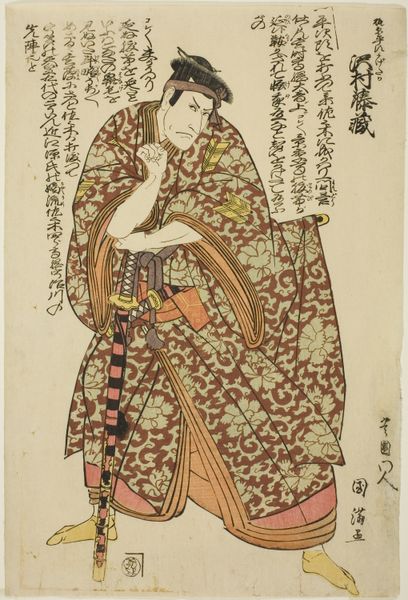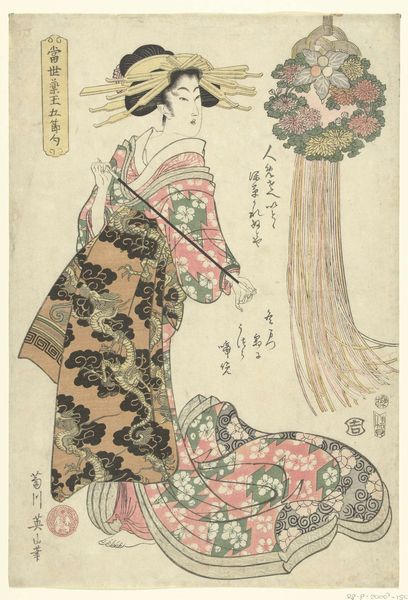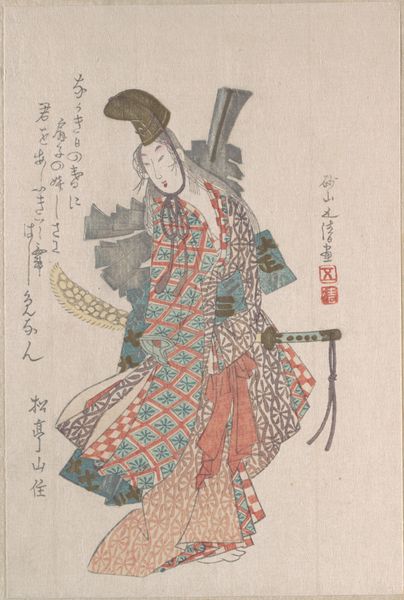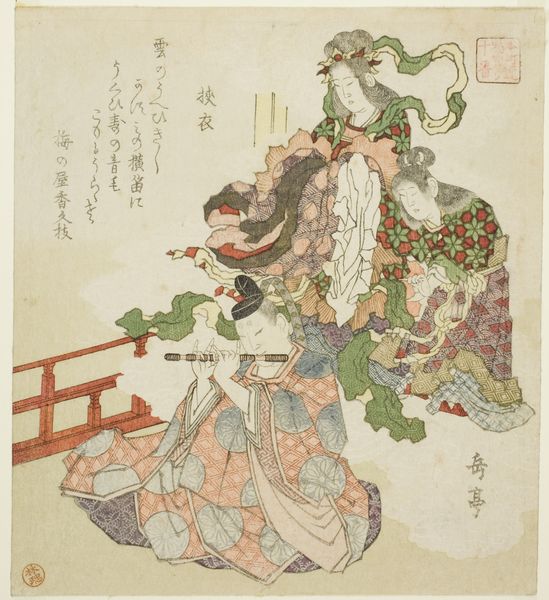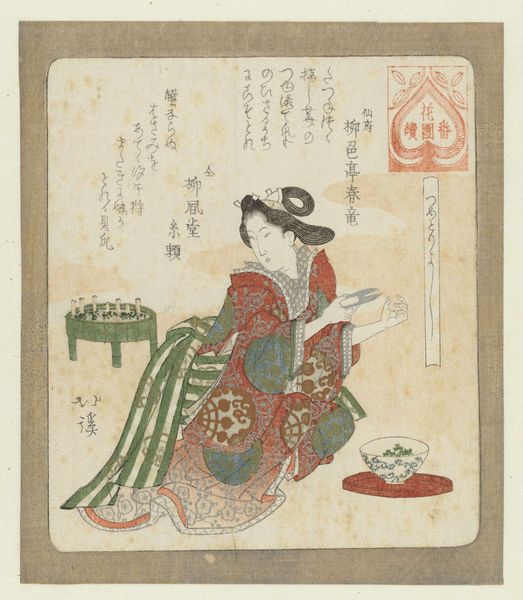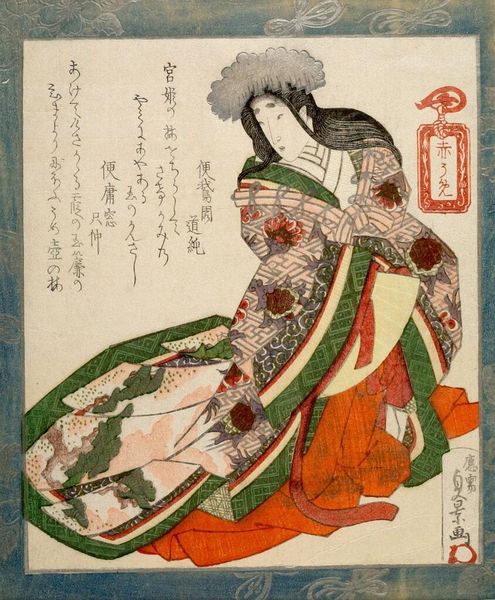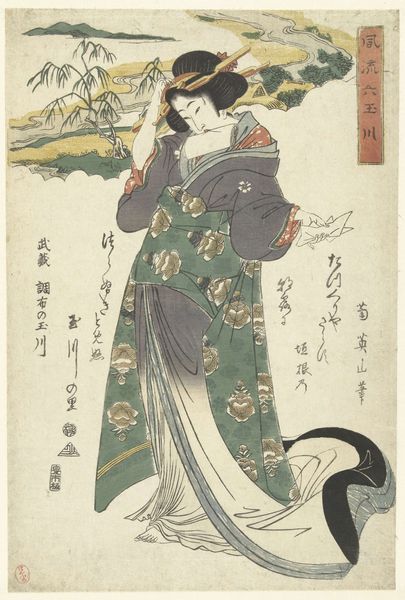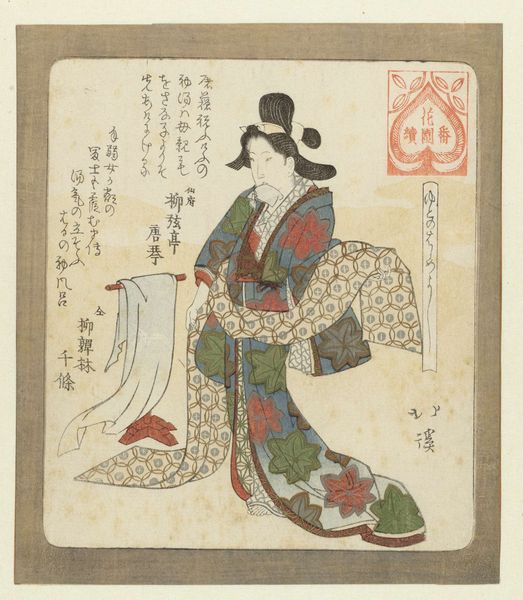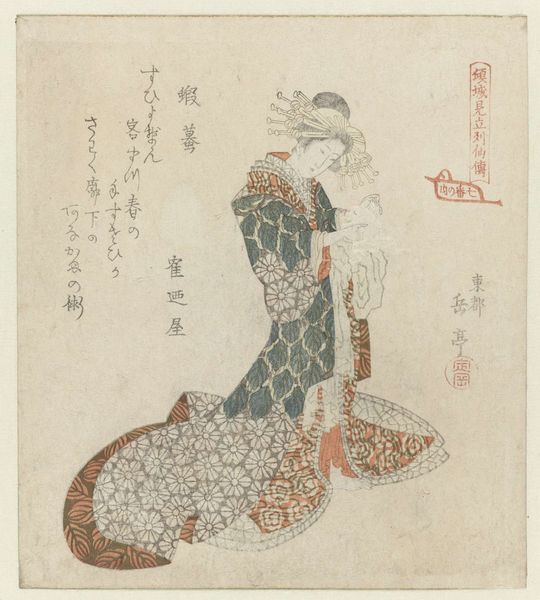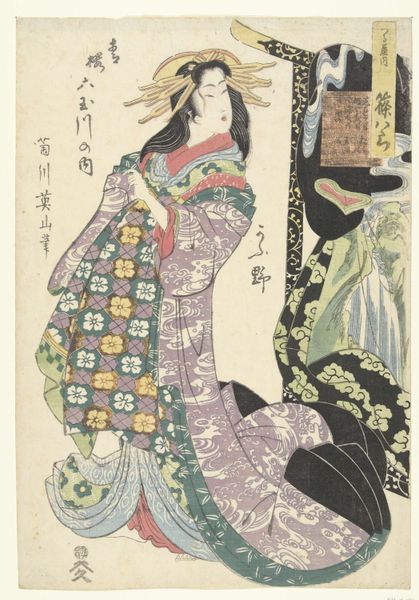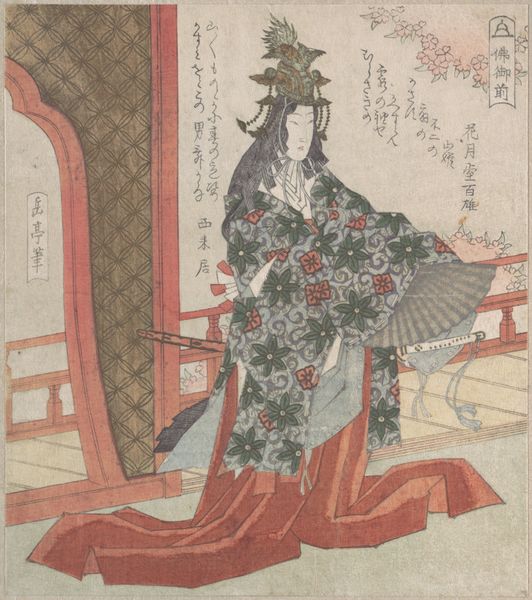
print, woodblock-print
#
portrait
# print
#
asian-art
#
ukiyo-e
#
figuration
#
woodblock-print
#
calligraphy
Dimensions: height 224 mm, width 185 mm
Copyright: Rijks Museum: Open Domain
Curator: Here we have a woodblock print titled "Fujiwara no Shōshi," created around 1822 by Totoya Hokkei. It's part of the Ukiyo-e tradition and currently held in the Rijksmuseum. Editor: It’s visually arresting! The color palette feels quite subdued, almost faded, yet the geometric patterns in her robe command attention. The flowing fabric and the calligraphic elements also catch my eye; it feels both detailed and deliberately stylized. Curator: Ukiyo-e, often referred to as "pictures of the floating world," invites us to reflect on the socio-political backdrop of Edo-period Japan. Fujiwara no Shōshi, the subject of this portrait, challenges Western conventions around depictions of women, their role, power and status within familial structures in Heian-era aristocracy. Hokkei created this piece as a meditation on power dynamics, with her intricate garments signaling her privileged position and family alliances within Japanese society. Editor: Looking closer, I’m intrigued by the technique. The layering of the woodblocks, the registration of the colors, everything feels deliberate. It also appears there is dye gradation, achieved via bokashi printing technique, particularly visible on the robes, which would’ve been time and resource intensive. The medium reflects a kind of reverence for labor and skill. We might think about how it circulates too, how many impressions are produced, where it is made, who controls that output. Curator: Precisely, Shōshi's role as a figure and its significance speaks volumes about gendered positions of authority and access during that historical time period. It’s worth mentioning the visual composition is quite clever here, it is both an act of preserving her place within the patriarchal power, while suggesting that female authority requires external, constant reinforcements, even for those who seemingly yield them automatically. Editor: Absolutely. I also wonder how its presentation challenged then contemporary definitions of ‘high’ and ‘low’ culture through its accessibility. Its materiality connects directly to how art-making was organized and experienced then; woodblock printmaking would involve multiple artisans. It opens up questions of collectivity in creation and dissemination, and, of course, who has access to this art now, in which forms. Curator: This print offers an avenue to interrogate notions around canon formation, cultural narratives, representation of female figures, power, and its accessibility, both in its creation and dissemination. Editor: It reveals something significant when we examine art production as a site of artistic, and economic collaboration with significant material constraints; in turn we examine hierarchies both visible, invisible.
Comments
No comments
Be the first to comment and join the conversation on the ultimate creative platform.
